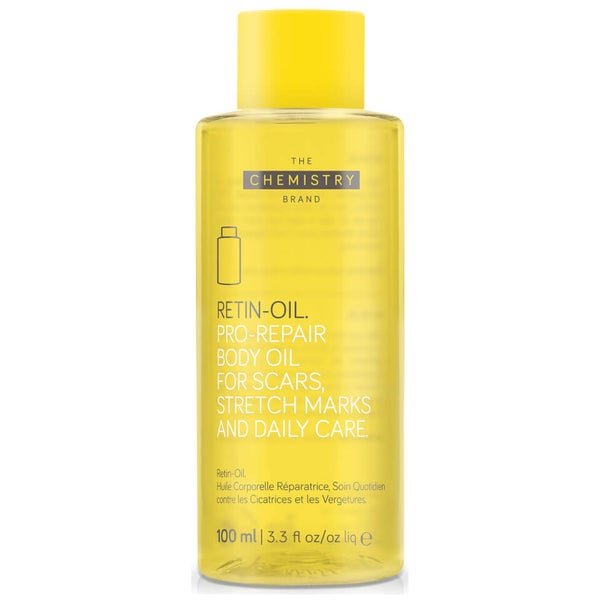
Food is one of the most common triggers for IBS - especially FODMAP foods. Discover over 300 of the best and worst foods for IBS in our guide. Learn more.
If you experience IBS, steering clear of these trigger foods may make it easier to manage your symptoms.
Food is one common trigger for digestive conditions such as irritable bowel syndrome (IBS).
And while we all understand the importance of eating a healthy, balanced diet, when you’re trying to avoid causing an IBS flare-up, managing to eat a diet full of essential nutrients can be a struggle.
Also, avoiding high FODMAP foods is the cornerstone of some of the most common IBS diets.
But is it really worth cutting out those fermentable carbohydrates and following a low-FODMAP diet?
To help, we’ve put together the following list of IBS-triggering foods that don’t belong on your plate – plus over 200 foods that do.
What is IBS?
IBS is a common health condition that affects the large intestine. Also known as the colon, this is the section of the gastrointestinal tract where three important parts of the digestion process happen.1 The three main functions of the large intestine:

- absorb water and electrolytes
- produce and absorb vitamins
- form faeces from waste and move them to the rectum where they’re passed as stools
A variety of reactions in the large intestine can trigger IBS symptoms. There’s not a single cause. It could be because food passes through your gut too quickly. Or too slowly.
Perhaps the nerves in your gut are oversensitive? Maybe stress is upsetting the balance? Or is it something genetic that you’ve inherited? And not only is there a wide range of causes, but the symptoms can also be equally inconsistent.
How do I know if I have IBS?
Although there’s plentiful evidence online to allow you to educate yourself on IBS symptoms, always seek a professional, medical diagnosis. This can often take time.
The condition is typically only formally diagnosed at the point when all other possibilities are ruled out.
Symptoms of IBS
- Stomach pain
- Bloating
- Diarrhoea
- Constipation
However, in addition to these main IBS symptoms, there are other complaints that are also associated with IBS.
For example, flatulence, nausea, back ache, incontinence, problems urinating and tiredness.2
Types of IBS
There are three varieties of IBS:
- IBS-C – Constipation dominant
- IBS-D – Diarrhoea dominant (IBS-D)
- IBS-M – Mixed bowel habits (constipation and diarrhoea)3
Your IBS symptoms depend on the type you suffer with.
Which foods trigger IBS attacks?
In many cases, high FODMAP foods are to blame for IBS symptoms. So, it makes sense to cut them out, right?
But whilst there’s growing evidence to show restricting these foods can drastically improve IBS symptoms, it takes serious commitment.

What are FODMAPS?
What are FODMAPS? FODMAPs are a collection of carbohydrates that contribute to IBS symptoms like gas, bloating and stomach pains. To spell this out:
- Fermentable
- Oligosaccharides
- Disaccharides
- Monosaccharides
- Polyols4
Summary: FODMAP is an anagram for carbohydrates that could cause/worsen IBS symptoms
Why choose a FODMAP diet for IBS?
Some (but not all) carbohydrates are poorly absorbed in the small intestine. As a result, they move further through the gut and ferment in the large intestine.
In people with IBS, this can trigger symptoms such as bloating, constipation, wind, diarrhoea, stomach pain and flatulence.5
The guiding theory of a low FODMAP IBS diet is to replace high FODMAP foods that are poorly digested with low FODMAP foods that easily break down in the stomach.
This decreases the fermentation of sugars in the large intestine. Consequently, this can reduce bloating, constipation and other IBS symptoms.
However, IBS sufferers aren’t all sensitive to the same high FODMAP foods. To help reduce IBS symptoms, a dietitian may recommend you eliminate high FODMAP foods for a short period.
They are then gradually reintroduced in phases to identify which exact foods you are most sensitive to. It can also show which are better tolerated.
Summary
- It has been proven that some carbohydrates (FODMAPs) can trigger IBS
- The FODMAP diet can help you distinguish which cause your symptoms and which are ‘safe’
113 foods to avoid with IBS
Here is a comprehensive list of high FODMAP foods which you should avoid/reduce if you want to follow this diet (especially in the first reduction stage).6
High-FODMAP vegetables/legumes
Excess gas-causing vegetables and legumes such as onions, broccoli, beans and lentils should be avoided. Also, it’s worth being aware that spicy food packed with chilli pepper might also trigger symptoms.
277 best foods for IBS
It’s not all doom and gloom though, there are also lots of foods that are perfectly fine to eat while following a low-FODMAP diet.11
Low FODMAP foods
Here are some of the most common ‘safe’ foods and the quantities you should limit certain foods too.
How to start a low-FODMAP diet
A low-FODMAP diet is not quite as simple as cutting out all high-FODMAP foods and focusing on low-FODMAP foods. It usually involves the following three stages:
- Restriction This stage usually lasts a few weeks and requires strict avoidance of high-FODMAP foods. Once you find adequate relief of IBS symptoms then you can move onto the next stage.
- Re-introducing foods This next step requires reintroducing high-FODMAP foods to see which type and amount of high-FODMAP foods are affecting you the most. It is recommended that you reintroduce foods one at a time – and it is recommended that you use a dietician to help guide you through this process.
- Making it work for you This stage allows you to know which FODMAP foods you need to restrict, and which ones are actually fine to consume. For example, you may be fine eating a piece of wheat bread every day but may want to avoid cauliflower all the time. As you can see, a low FODMAP diet is a significant dietary intervention. And unless you have diagnosed IBS and have exhausted all other IBS diet options, it can do more harm than good.

If you don’t want to be so strict…
The lists of high- and low-FODMAP foods below show how complex and restricted a low FODMAP diet can be. Just to reiterate, a low FODMAP diet isn’t for everyone. But that’s not to say you can’t take inspiration from some of the theory.
For example, keeping a food diary to track the severity of your symptoms against what you’ve consumed. Most of us can’t remember exactly what we eat on a day-to-day basis. This is why it can be helpful to write it down. This visibility allows you to recognise patterns between your diet and IBS symptoms.
With this knowledge, you could then reduce or eliminate a food for a short period to see if it has an impact on symptoms. This is a simple but effective way to, see how an individual food may be causing your digestive problems.
How to start a food diary for IBS
- Write down everything you eat daily, the time you ate it, and the severity and time of your IBS symptoms on the same day.
- If you recognise a pattern where eating a certain food seems to regularly coincide with a rise in your digestion problems, consider eliminating this from your diet for a few weeks.
- During this elimination period, continue to keep a food diary and track your symptoms.
- After this period, gradually reintroduce the food and record any changes in your symptoms.
- Repeat with other foods if necessary.
It’s always recommended that any changes to diet are done in consultation with your GP or a dietitian.
Summary
- There are several stages to a formal FODMAP diet, all of which help you to determine which foods are a problem for you
- It is recommended that you consult a trained dietician for help with this
- Keeping a food diary can also help you find out which foods you may need to avoid
Before you consider a low FODMAP IBS diet
Following a low FODMAP IBS diet is not a decision to take lightly.
Only attempt it if:
- Your IBS is formally diagnosed by your GP
- You’ve tried other less restrictive diet strategies already (e.g. increasing your fibre intake and probiotics)
- You’re recommended this diet by a FODMAP trained dietitian. Don’t attempt it alone – you need ongoing professional nutrition advice and support to implement this diet plan effectively
This final point is particularly important.
If this is a diet change you would like to initiate, careful implementation is crucial.
A FODMAP trained dietitian can assess if it’s appropriate for your IBS symptoms and also ensure what you’re eating continues to be nutritionally sufficient.
This is not an allergy diet
Eliminating high FODMAP foods isn’t a long-term solution.
This is where IBS diets can differ from allergy diets.
It’s important to recognise, IBS is not caused by a food allergy. It has nothing to do with your immune system.
Whereas diets for food allergies and intolerances often involve permanent exclusion of an allergen, this is not usually required in IBS diets.
For example, after the initial elimination period in a FODMAP diet, most IBS sufferers can start to tolerate small to moderate quantities of high FODMAP foods.
Consider that food may not be causing your IBS
Can probiotics help IBS?
The gut contains trillions of bacteria. This diverse collection of microbes forms your gut microbiome, which helps to break down food and regulates bowel function.
The large intestine is home to 95% of the gut microbiome.
In people with IBS, symptoms may trigger when there is some kind of imbalance between helpful, good bacteria and the other not so friendly species.
This could manifest itself in the symptoms above.12
So, regaining balance is key to a healthy digestive system and for relieving IBS symptoms.
Probiotics help by topping up the level of good bacteria in the gut, which muffles the impact of the more hostile varieties.
How can I get good bacteria?
Probiotics are live bacteria and yeasts that can contribute to a healthy gut microbiome. You’ll find them in certain types of food and in supplements.
Foods containing friendly bacteria in food
You can find probiotics naturally in a number of foods.
For example, eating cultured dairy products and fermented foods can help to ensure your friendly bacteria levels remain topped up.
Look out for yoghurts, kefir, sauerkraut, kimchi, pickles, tempeh, natto, miso, and kombucha.
But there is one thing you need to be sure of – the probiotic bacteria must be alive when you eat it. Some food processes, such as pasteurisation kill live bacteria.
So, it’s important that yoghurts are ‘live’ or contain ‘active’ ingredients. Choose unpasteurised sauerkraut and select fermented pickles rather than ones soaked in vinegar.
Probiotic supplements
Friendly bacteria supplements are a useful alternative if eating fermented foods doesn’t appeal.
There are a huge range of probiotic products available and the impact they have on IBS symptoms varies considerably. Here are two things to look out for:
- What bacteria does the product contain? Two commonly studied friendly bacteria strains that may help with the reduction of IBS symptoms are Lactobacillus and Bifidobacterium13,14,15
- Will the bacteria reach your gut? To get to the large intestine, a probiotic must survive the acidic environment of the stomach. Buying from a reputable source is strongly advised16





